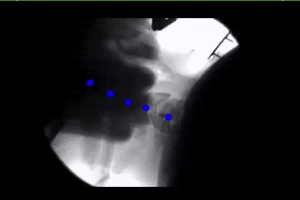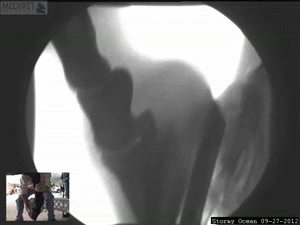Digital Motion X-Ray (DMX)
CALL: 813-994-0151

Digital Motion X-ray (DMX) for Ligament Injury and Instability



Static x-ray, MRIs and CTs often miss spinal ligament injuries because you don’t or can’t move during the study. The upper 30% of the cervical spine between the C0 (Occiput/Skull), C1 (Atlas), and C2 (Axis) posterior aspects of the spine contain no discs, just ligaments and are not even evaluated on the majority of MRI studies.
Digital Motion X-ray (DMX) is the only diagnostic test with the ability to detect sub-failure ligament injuries. Motionless MRIs do not have the resolution power to detect the stretching or an elongation of a cervical ligament resulting in an inaccurate diagnosis. MRIs have the ability to identify a complete failure, more often seen in knees and shoulders. Sub-failure ligament injuries are most commonly seen in the cervical spine, wrists, and tmj.
DMX can provide valuable objective and measurable information about the stability of all 22 major ligaments in the cervical spine (anterior longitudinal ligament, posterior longitudinal ligament, interspinous ligaments, capsular ligaments, alar ligaments, transverse ligament, and accessory ligaments). Digital Motion X-ray (DMX) is often utilized to identify and demonstrate post traumatic ligament instability in the neck that may be responsible for neck pain, dizziness, headaches, unstableness, referred pain to the shoulders, arms, and/or hands caused by stretched ligament injuries which cannot be detected by MRI.
DMX testing is performed with the patient in a weight bearing standing position and moving the cervical spine through different motions. Each motion is testing the function of specific groups of cervical ligaments. Each motion is an independent study that focuses on the anatomical structures found in that motion. Ligamentous injuries are painful, progressive, and permanent. Ligament injuries need to be analyzed and detected for a proper diagnosis and to determine the severity of the injury.
American Medical Association (AMA) Guidelines for Permanent Impairment (Fifth Edition) rate ligamentous injuries for impairment. If one or more ligaments are damaged, 5-8% whole body permanent impairment can be assigned. If aberrant motion exceeds 3.5mm, 25% whole body permanent impairment can be assigned.
The healing of damaged ligaments occurs with fibrous repair (scar tissue) not by replacing or regeneration of the original elastin tissue, resulting in the injured ligament permanently weaker and more susceptible to injury in the future. The altered biomechanics of an unstable joint lead to progressive degenerative changes 6-10 times faster than normal.
Anyone who has been in car accidents (even a minor ), had traumatic falls or injuries can benefit from the (DMX) digital motion X-ray study and computerized measurements.

